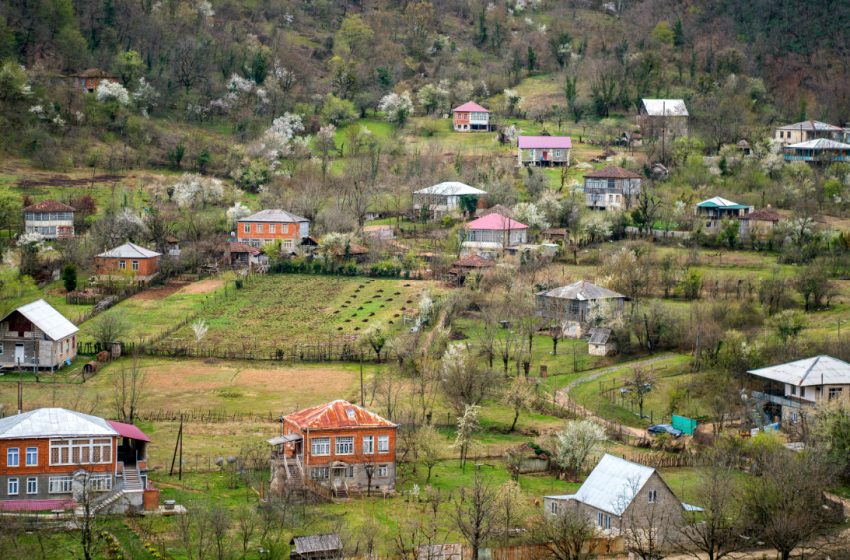
Is blockchain a good bet for development?
Blockchain technology offers great promise and great risk. We need to better understand how it works and how to use it safely and effectively.
For all the enthusiasm that blockchain has inspired in its recent rise to prominence, it has gained its detractors, who criticize all the hype and claim its promise is exaggerated.
Cryptocurrency, initial coin offerings, and cryptoexchanges are often perceived as a hotbed for fraudsters, money launderers and other unsavory characters. There is certainly truth to that. Formal regulatory frameworks are evolving to address this. Others question the real need for blockchain’s special feature of delivering a trustworthy product lifecycle management rooted in the cradle-to-grave principle.
In these early days, the best approach to the emerging technology is to test it out, find what will work best and what would be better tossed, and, above all, not throw the baby out with the bathwater. This is no different than any other technology introduction.
From a business perspective, it’s helpful to think of blockchain technology as a type of next-generation business process improvement software across a wide range of areas. A few brief cases illustrate this point.
Remittances play a large role in the economies of many developing countries. But costs of transferring these funds are high, reducing their benefit. The global average cost of sending $200 is about 7%, and across many African corridors and small islands in the Pacific, these costs are more than 10%. Reducing these costs to 3% is a global target under Sustainable Development Goal (SDG) 10.7.
UnionBank of the Philippines is tackling this challenge through its i2i platform, which has received clearance and support from the central bank (Bangko Sentral ng Pilipinas) to operate as the country’s first private Etherium blockchain-based payment network for domestic remittances. Project i2i’s network has expanded from six financial institutions in 2018 to 31 and it has facilitated over 575 transactions amounting to nearly 80 million Philippine pesos. The savings achieved on a single domestic remittance has been the equivalent to a week’s worth of food for some unbanked families.
Further building on the i2i platform, UnionBank has issued its own stablecoin, PHX, which is pegged to the Philippine peso and backed by UnionBank reserves. UnionBank used a blockchain-based tokenized fiat to remit from OCBC Bank in Singapore to an account holder at Cantilan Bank, a rural bank in Surigao Del Sur in the southern Philippines.
Countries around the world are using blockchain technology in development projects.
The concept of using blockchain in the diamond industry has risen to prominence in response to the issue of blood diamonds, also known as conflict diamonds. These are “rough diamonds used to finance wars against governments around the world”. Under a United Nations mandate, 54 countries have committed to remove conflict diamonds from the global supply chain. Many of these issues are rooted in lack of visibility and provenance along the supply chain, which are underpinned by a paper-based certification system that is vulnerable to tampering.
De Beers in 2018 launched a blockchain platform called Tracr with the objective to establish provenance, authenticity and traceability across the diamond supply chain. Well aware of the frequent criticism of blockchain-based platforms, namely that while they provide immutable data storage, they are dependent on the data entered into them. To address this, Tracr’s tracking is being backed up by information on the diamond’s physical attributes as well other metadata such as color, clarity, cut, and carat weight.
Likewise, blockchain for agriculture can track the journey of produce along a supply chain from farm to table. This can improve supply chain efficiency and access to finance for smallholder farmers. Australia-based AgriDigital in 2016 executed the world’s first settlement of an agricultural commodity on a blockchain, enabling real-time payment on title transfer for grain growers. AgriDigital’s work with blockchain is ongoing and based on Geora, an Ethereum-based commercial blockchain protocol designed for agriculture.
Finding out who owns land is not always straightforward. Only about 30% of the world’s population has a legally registered title to their land. This makes it difficult for them to justify ownership of their own property, which can have a devastating impact on their economic livelihood.
Georgia has since 2016 been collaborating with the Bitfury Group to integrate registration services blockchain to restore trust and improve efficiency in the country’s land registry. In the first phase blockchain technology was used for immovable property registration and as of 2019, a total of 2 million extracts on immovable property have been sent via blockchain. Sweden has completed a second set of trials and is now working with volunteers to participate in buying and selling property on a blockchain. The underlying technology includes Postchain, a consortium database technology combining the capabilities of enterprise databases with private blockchains, which is streamlining and securing the process leading up to the transfer of a property title.
Others conducting trials of land registry on blockchain include the land registries of New South Wales, Australia; the United Kingdom; Brazil; Andhra Pradesh, India; as well as Fiji.
It is still unclear which processes blockchain will significantly improve and which will be improved simply by digitizing workflows. In this critical early phase it is important to understand the trade-offs. Other networked innovations, such as the internet or cloud computing, all also went through several stages of evolution. Potential users should weigh the relative strengths of databases, blockchains, and distributed ledger technology and apply appropriately. Let’s test blockchain technology and build a knowledge base around it to better understand how it works.
A version of this blog post was published in the Asian Development Bank













